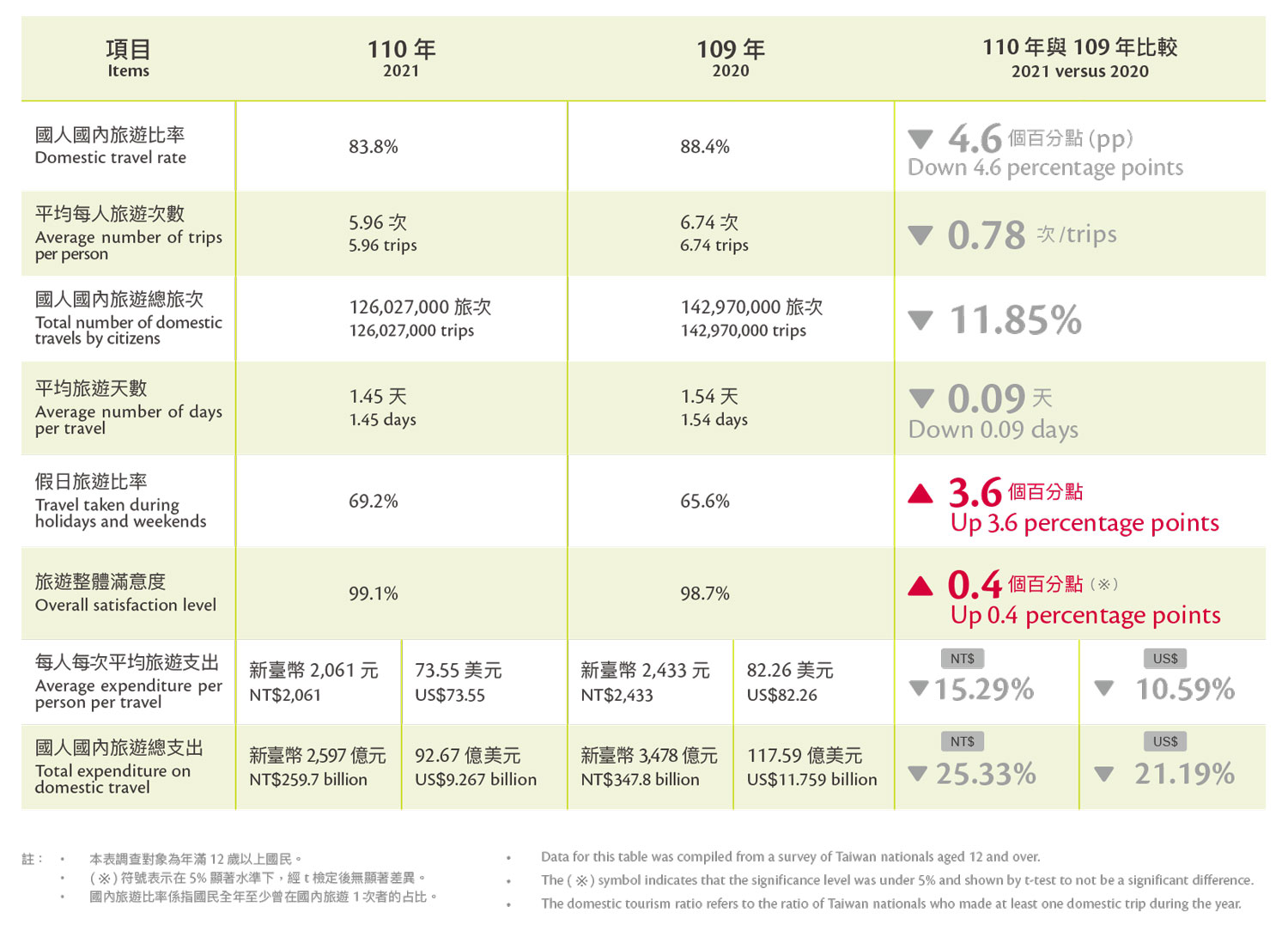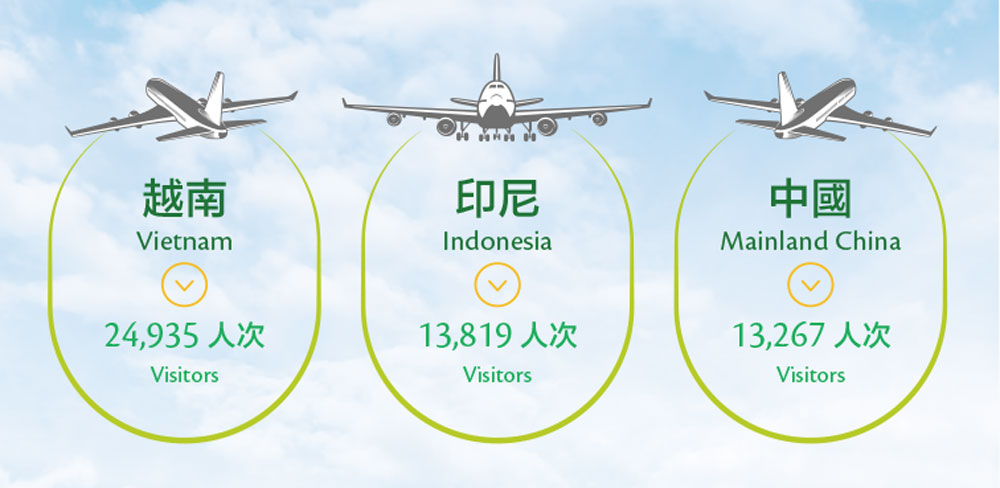COVID-19 has had a major impact on the global economy, bringing international travel to a standstill as countries implemented border controls. Taiwan's tourism industry has also faced challenges due to border closures and ongoing industrial transformation.
Visitor Trends at Major Tourism Attractions

To compare statistics for principal scenic spots and changes in visitor numbers at various types of scenic sites (316 sites in 2020 and 323 sites in 2021), sites added or deleted in 2021 were excluded, resulting in 313 sites that are the same in both years. In 2021, the number of visitors increased at 30 sites and fell at 283 sites compared to 2020.
In 2020 and 2021, the number of visitors to principal scenic sites trended down due to COVID, with visitor numbers at all types of destinations falling between 15% to 39% in 2021 relative to the year before.
Comparing 2021 and 2020 by month, Lunar New Year holiday travel in February 2021 was not substantially different from the same period in 2020. In March and April 2021, COVID slowed visitor numbers more relative to the same period in 2020. From May 19 to July 26, Taiwan upgraded to a Level 3 alert due to a resurgence of COVID. Despite a fivefold increase in the issuance of coupons, domestic travel vouchers, and other revitalization measures, the number of visitors to various scenic spots failed to recover to the year earlier level. The total number of visitors to scenic spots also fell for the entire year compared to 2020.
Among 70 scenic spots at Taiwan's 13 national scenic areas, visitor numbers grew at four sites and fell at 66 sites. Dapeng Bay National Scenic Area was the only one of the 13 national scenic area to post positive growth (44.03%) in 2021, due mainly to a 148.78% increase at the Xiaoliuqiu Recreation Area resulting from adjustments to statistical methods. Scenic areas with more than 50% declines included Penghu National Scenic Area (-56.26%), Matsu National Scenic Area (-56.44%), and Northeast and Yilan Coast National Scenic Area (-50.07%), all due to COVID-related reductions in bus and flight service and event delays.
Inbound Travel Market
In 2021, Taiwan received 140,479 inbound visitors, down 89.80% from 2021. The number of outbound travelers from Taiwan during the same period fell 84.59% to 359,977.
In 2021, Vietnam was the biggest source of inbound visitors to Taiwan, with 24,935 arrivals or 17.75% of the total. The next biggest source markets were Indonesia (13,819 visitors, 9.84%) and mainland China (13,267 visitors, 9.44%). Analyzed by travel purpose, "other" led with 113,261 visits (80.62% of the total), followed by "business" (11,937 visits, 8.50%). Among inbound visitors, females accounted for 34.62% of the total and 20-29 year olds were the largest age group (31.62%).
Taiwan’s Outbound Travel Market
In 2021, Taiwanese citizens made 359,977 trips abroad. Asia was the main destination, accounting for 232,736 trips, or 64.65% of the total, followed by the Americas with 114,339 trips (31.76%), Europe with 7,139 trips (1.98%), and Oceania with 4,833 trips (1.34%).
Analyzed by country (region), mainland China was the first destination of choice, attracting 128,637 Taiwanese visitors, followed by the US (103,895), Japan (14,049), Malaysia (13,656), and Hong Kong (12,692).






